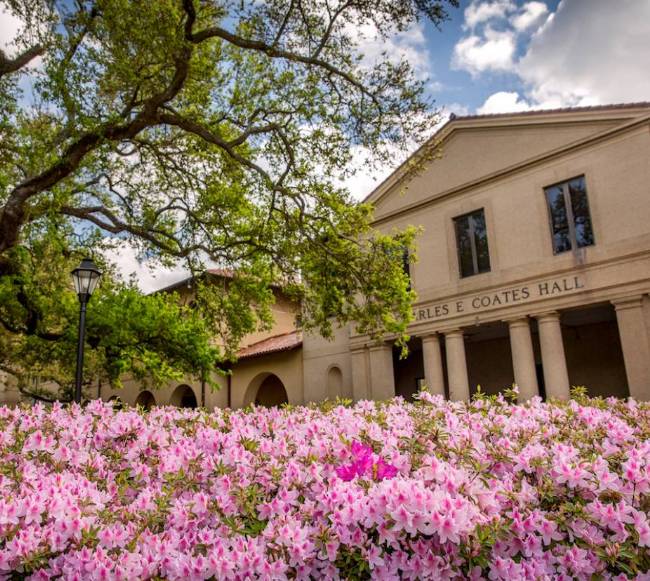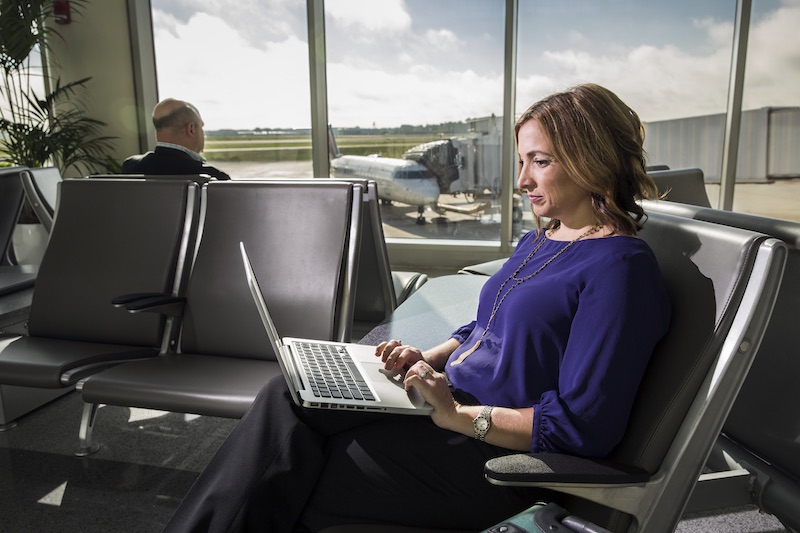‘A Love for the Sky’: LSU’s Jill Trepanier Educating K-12 Louisiana Students About the Environment
July 02, 2025
As hurricane season ramps up in Louisiana, so does LSU professor Jill Trepanier’s commitment to helping K-12 students across the state better understand and prepare for the forces of nature all around them.
What began in 2018 as a single rooftop weather station on LSU’s campus as a tool to help freshmen connect to the science happening around them, has grown into an educational network in the southern part of the state, connecting K-12 students with the sky through real-time data, interactive technology, and hands-on learning.
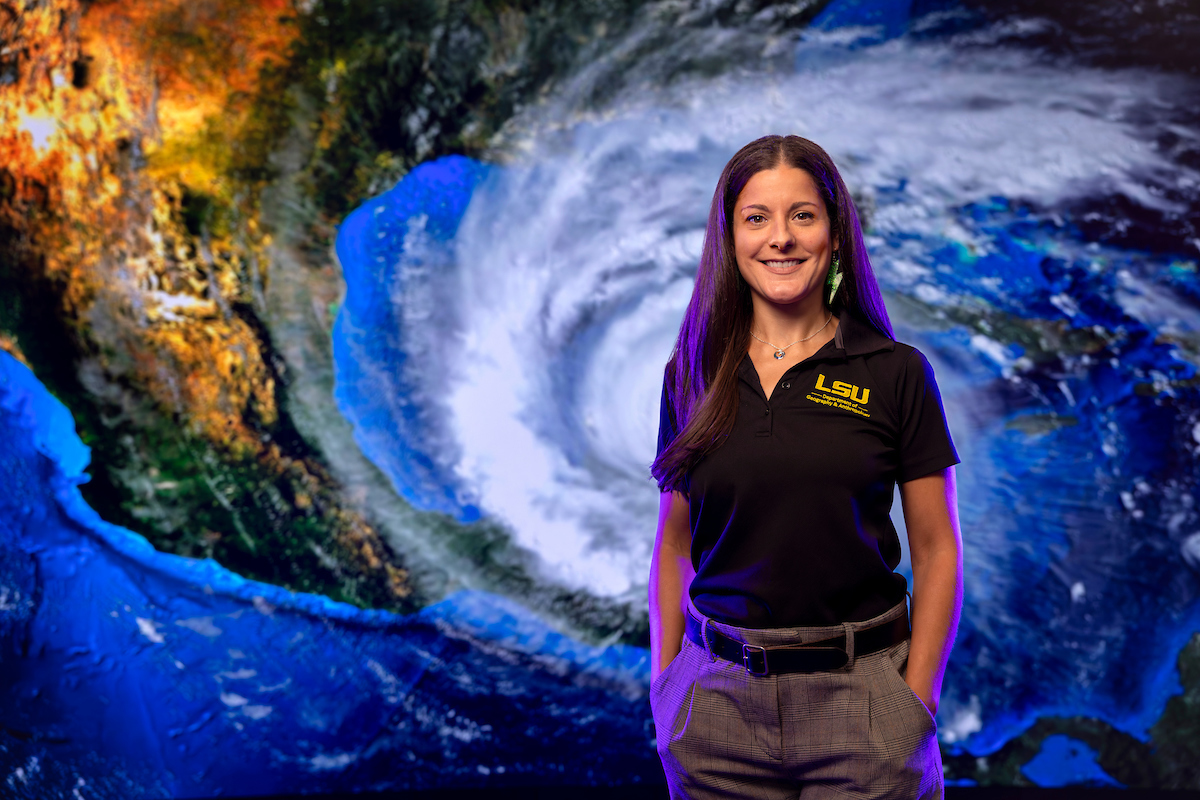
– Photos by Eddy Perez
Trepanier, a professor and department chair in LSU’s Department of Geography & Anthropology, leads a project that now includes 10 weather stations installed at or near K–12 schools from Lake Charles to Grand Isle.
“The environment is harsh in Louisiana. Beautiful, but harsh,” Trepanier said. “The more students know about it, the better they can protect themselves and their families. For me, that’s what it is all about.”
The project all started to help college students in Trepanier’s meteorology and physical geography classes connect more deeply with the material by using weather data collected from the air around them.
“These were 400 freshmen every semester who were not geography majors, so they didn't really love the science of the atmosphere. But they were able to connect with the information because they could see the data on an app on their phone as they were living in it”
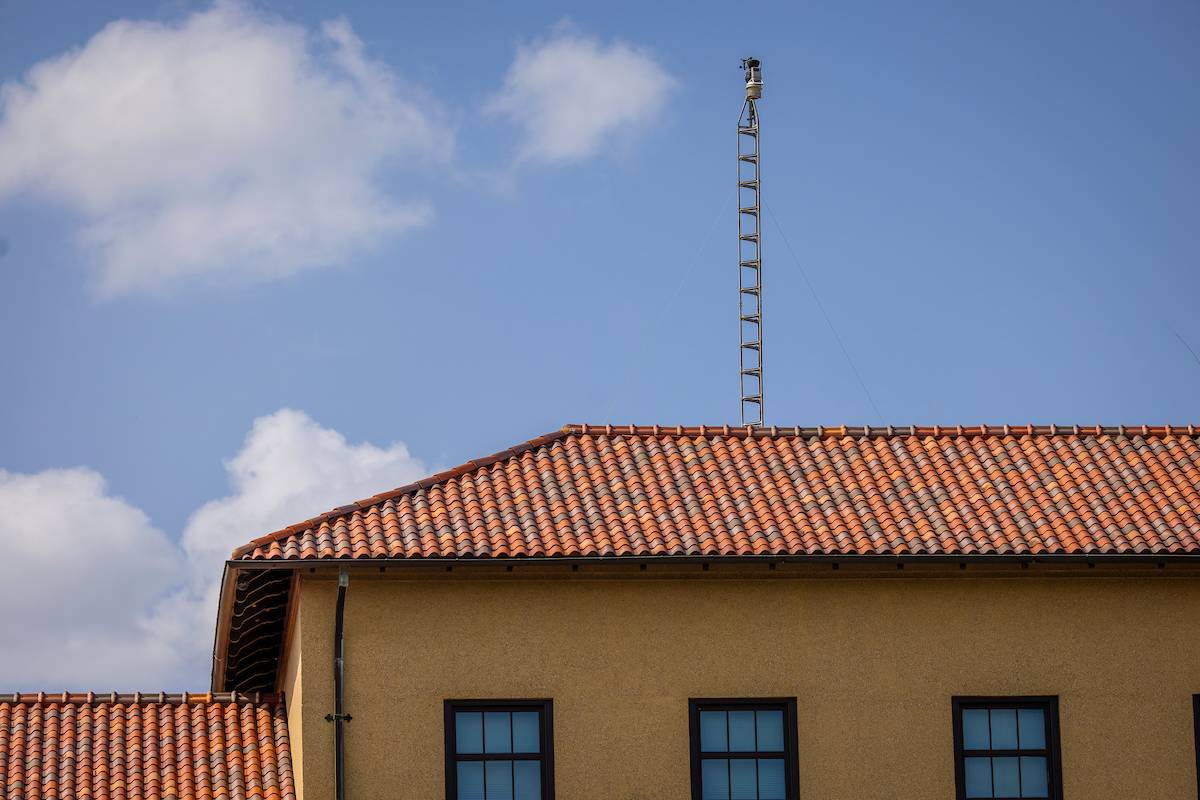
A weather station on top of the Howe-Russell Geoscience Complex on LSU's campus.
Installed across South Louisiana, each weather station is solar-powered and connected to a console that uploads data to an online web platform and displays it on a dashboard. Then an app shows the local students the current conditions and records for the day.
“When we look at data from the community, it might be many miles from where you are. And most people live within a few miles or less of their schools. It allows them a close-up view of what is happening, instead of relying on something miles away,” she said.
Teachers can use the data with certain lessons or during a passing storm. But the available data also educates them on things like solar radiation, “It also helps aid things like seasonality and our relationship with the sun. It extends well beyond just rain.”
The material is also aligned with the Louisiana Student Science Standards for environmental and Earth sciences.
“By allowing students to compare real data across space and time, it helps them to understand how systems are connected. And most of these science standards have them focusing on system theory, in one way or another,” Trepanier said.
With access to the full network of information, students can compare conditions across South Louisiana and better understand complex climate systems along the coast. Trepanier believes that early exposure to environmental science can help create a more resilient future.
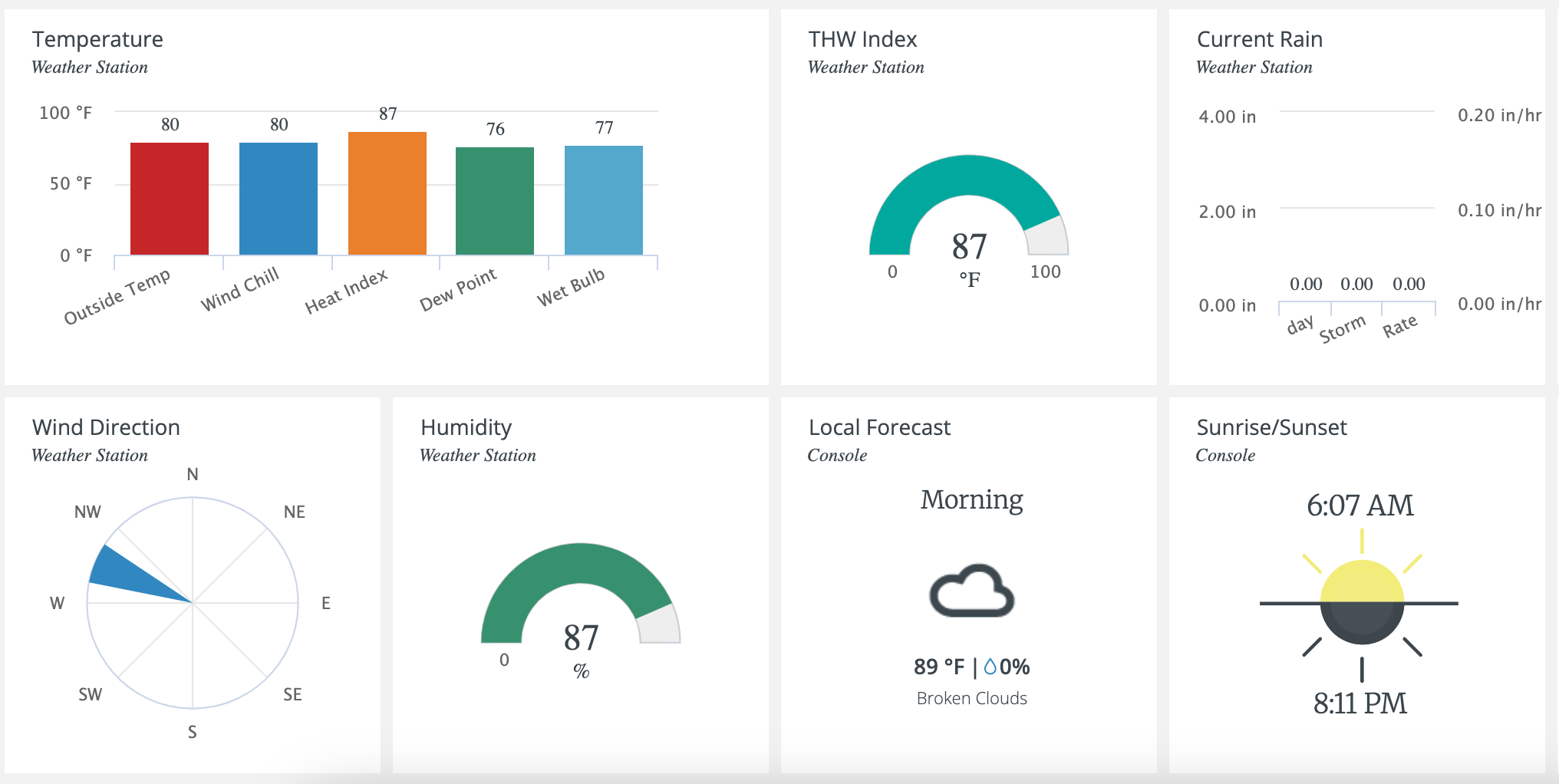
The weather station data report includes things like the temperature, humidity and wind direction.
“Kids still want to know and understand the things around them. While grown-ups sometimes do, more often than not, we shy away from new information. Not kids. And so many of these kids are going to grow up and start working in Louisiana. So, when they are grown, they can make more informed decisions that have come from a lifetime of education and love for their environment,” Trepanier said.
The LSU Provost Fund for Innovation funded the work two years ago to expand the network. Trepanier is now seeking funding to continue to grow the project to include the Chitimacha Tribal School in St. Mary Parish, a move she hopes will help bring more opportunities and localized data to this community. For Trepanier, it’s not just about data, it’s about cultivating curiosity and care.
“I hope students take away a love for the sky,” she said.
As we build teams that win for Louisiana, the nation, and the world, LSU is putting
our state and its citizens on firmer footing for a brighter tomorrow — one win at
a time.Next Step
